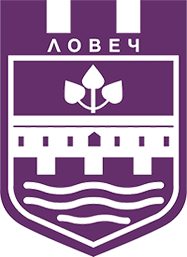Covered Bridge
Lovech
The Covered Bridge in Lovech – the symbol of the city that stands the test of time
Imagine a bridge that not only connects the two banks of the Osam River, but also takes you back in time, telling stories about great masters, lively shopping streets and events that left their mark on Bulgarian history. Welcome to the Covered Bridge in Lovech – the only one of its kind in the Balkans and the emblem of the city!
The first covered bridges – trade and tradition
As early as the 19th century, travelers such as Ami Boue and Felix Kanitz described the old bridge in Lovech as a “covered and decorated with shops stone bridge” – an important commercial and infrastructural facility. Caravans with trade goods, military units, messengers and craftsmen used to pass over it. Small shops, barber shops and cafes were located here, turning it into a kind of lively street over the river.
But the Osam River repeatedly showed its strength - floods destroyed old bridges and forced locals to rebuild them. After the great flood in 1872, Lovech was left without its main connection between the two banks. Then the city turned to the legendary master Kolyo Ficheto - the man who would create a bridge that went down in history as an architectural masterpiece.
Kolyo Ficheto's Bridge - a Masterpiece of Genius
In 1874 - 1876, with the help of locals, Usta Kolyo Ficheto built the Covered Bridge - a structure that surpassed all previous attempts to create a similar facility.
✅ Completely built of wood, without a single iron nail - only wooden wedges were used for the joints.
✅ Length 84 meters, height 7 meters, width 10 meters.
✅ Built on 5 stone abutments with decorative sculptures - a lion (Bulgaria), a double-headed eagle (Russia), a female torso (fertility) and a whip (the enslaver).
✅ Inside were 64 small shops, illuminated by gas lanterns.
✅ Its roof was covered with sheet metal and had 28 skylights providing light.
This bridge was not just infrastructure - it became a real trading center, where craftsmen and merchants offered their goods, and local residents gathered for conversations and meetings.
But, unfortunately, on August 3, 1925, the bridge was burned to the ground by a mysterious fire. Whether it was an unfortunate accident, an unfortunate coincidence or deliberate arson remains a mystery.
The bridge by architect Stefan Olekov - a new era
After the fire, the city could not afford to be without its emblematic bridge for a long time. Thus, in 1926 - 1931, a new reinforced concrete Covered Bridge was built in its place, designed by architect Stefan Olekov.
✅ Length 73 meters, height 16 meters, width 13 meters.
✅ Reinforced glass roof, which provided natural light.
✅ Interior space with 40 new shops.
✅ Panoramic terraces, from where one could observe the flow of the Osma River.
This was the first engineering miracle of its kind in Bulgaria, using modern technologies, but preserving the tradition of the Covered Bridge.
The modern bridge - a return to the original vision
In the 1970s, the formation of the Architectural and Historical Reserve "Varosha" began and the idea was born to return the appearance of the bridge to Kolyo Ficheto.
✅ In 1981-1982, according to a project by architect Hristo Zlatev, the bridge was reconstructed and acquired its current appearance - a replica inspired by the original design.
✅ The bridge was now pedestrian - a place for walks, shops and craft workshops.
✅ In addition to traditional shops, there were woodcarving, leather goods, jewelry and textile workshops inside.
✅ In 1999, it was thoroughly renovated under the "Beautiful Bulgaria" program, and in 2005 it was declared the "Street of Crafts".
Today, the Covered Bridge is one of the biggest attractions in Lovech. In the evening, it shines like a fairy-tale portal between the old and new town, and during the day it offers tourists an authentic atmosphere, crafts and a beautiful view of the river.
The Covered Bridge - more than a symbol
There are many historical landmarks in Lovech, but the Covered Bridge is more than just a place - it is the heart of the city.
🌉 It has been destroyed and rebuilt, but it has always preserved the spirit of Lovech.
🛍️ It has been a street, a market, a place for meetings and walks.
🏛️ It has preserved the craftsmanship of Kolyo Ficheto, but has withstood modern times.
As you walk along its wooden slabs, know that you are stepping on more than history – you are part of a living legend!
This Location is part of the Guide:

 Waypoint.bg
Waypoint.bg